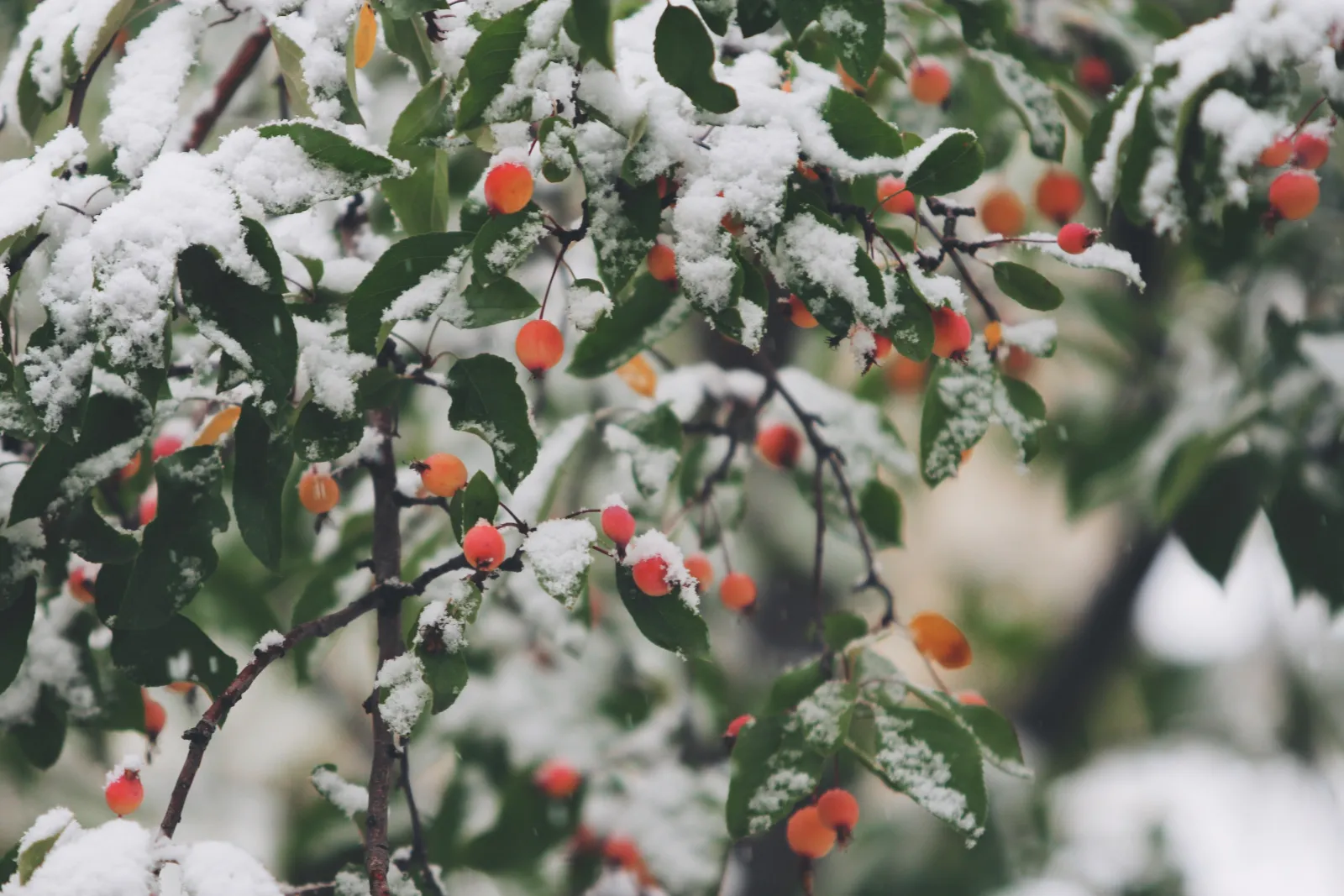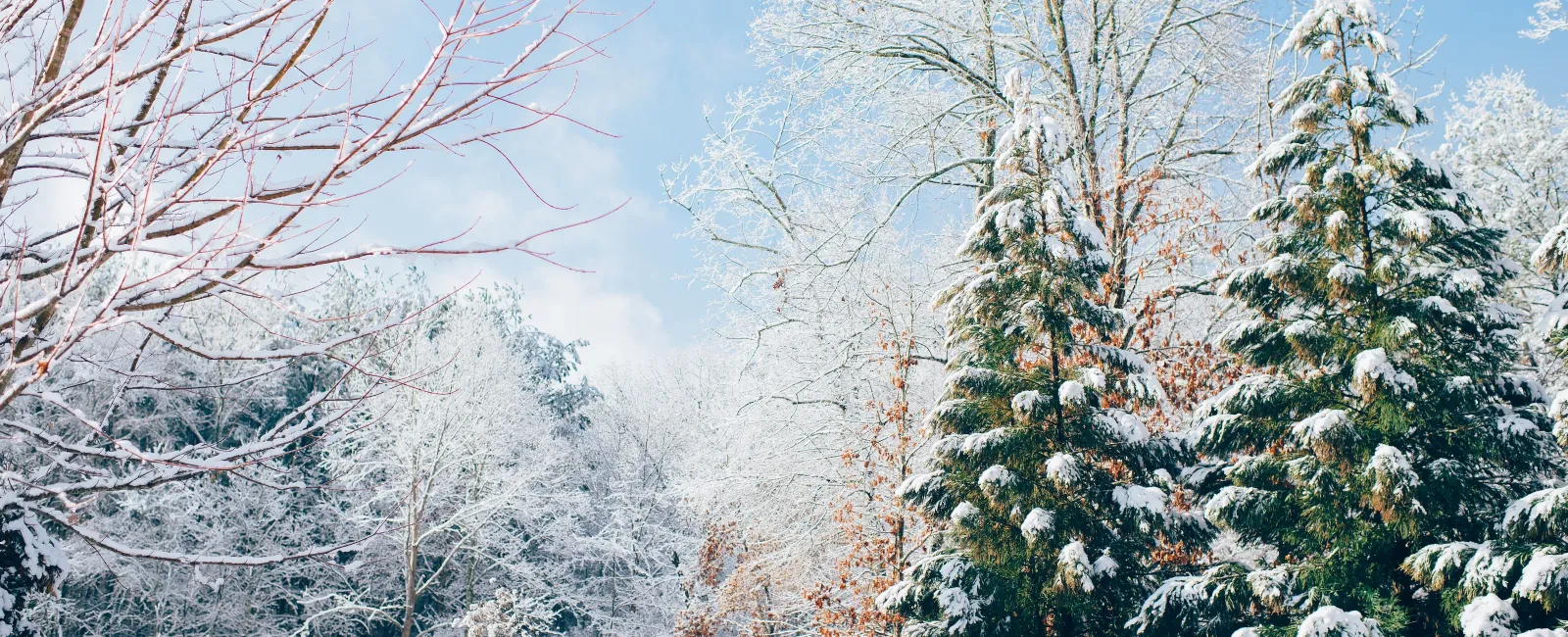When the chill of winter sets in, deciduous trees shed their leaves and go dormant while conifers continue their steady growth. The stark silhouette of bare branches against the sky can be just as visually striking as the full canopy of summer.
Caring for trees properly during the winter months is key to their health and winter survival.
Preparing Trees for Winter Dormancy
Deciduous trees like oak, maple, birch, and fruit trees need to store up energy during the growing season for their period of winter dormancy. Making sure trees are healthy going into winter will help them survive the challenging months ahead.
Prune trees in late fall or early spring when they are dormant to avoid sap bleeding from cuts. Remove any dead or damaged branches to prevent disease.
Water thoroughly in fall before the ground freezes. Hydration is crucial going into dormancy.
Fertilize in fall with a balanced organic fertilizer to provide nutrients for next spring's growth.
Rake and remove fallen leaves, which can harbor pests and diseases. Shred leaves with a mower to create nutrient rich mulch.
Spray with dormant oil in late fall to suffocate overwintering pests. Target egg sacks and hibernation spots.
Taking these proactive steps sets up trees for a healthy dormancy period and set them up for a beautiful springtime bloom.
Providing Winter Protection for Trees
Exposure to harsh winter wind, ice, heavy snow, and large temperature fluctuations can damage trees. Certain protective measures can help stabilize and insulate trees during the winter months.
Wrap young and thin-barked trees with breathable, commercial tree wrap going from the base up to the first branches. Avoid using plastic which can cause moisture buildup.
Place stakes around newly planted trees and tie flexible strapping in a figure eight pattern up the trunk for support.
Cover the soil with 4-6 inches of shredded bark mulch around the base of trees to insulate roots and prevent frost heaving. Pull mulch a couple inches back from the trunk.
Paint trunks with white latex paint diluted with water to reflect sunlight on sunny winter days and prevent sunscald.
Consider temporary windscreens for evergreens and exposed areas. Burlap attached to wooden stakes can filter wind.
Check ties, tree wrap, and mulch periodically and adjust as needed. Remove in spring as growth resumes.

Pruning Trees in Winter
Pruning deciduous trees during their dormant period in winter has several advantages over summer pruning:
Cuts heal quickly in spring growth.
It's easier to see branch structure when leaves are gone.
Pests and diseases are less active.
No sap bleeding from cuts that can attract pests.
When pruning in winter:
Use proper pruning techniques - make clean cuts just outside the branch collar. Don't leave stubs.
Remove damaged, dead or crossing branches. Shorten extra-long branches.
Limit removing large branches unless they pose a hazard. This can leave wounds prone to disease.
Prune birch, maple, walnut and other bleeders minimally to avoid sap dripping from cuts.
Shaping and rejuvenation pruning is best done in early to mid-winter. Avoid late winter pruning when growth is starting.
Pruning Peach Trees in Winter
Peach trees produce fruit on one year old wood. That makes winter an ideal time to stimulate new growth by:
Cutting out dead, damaged and diseased branches into healthy wood.
Thinning overly dense branching to open the canopy and allow light penetration. This increases air circulation and reduces pest issues.
Removing any suckers sprouting below the graft union which can sap energy.
Shortening extra-long limbs back to an outward facing bud to encourage new lateral shoots and fruiting wood.
Pruning should leave a vase-shaped, open canopy on mature trees. Limit removing large branches to help trees heal.
Caring for Evergreen Trees in Winter
Evergreens like pine, spruce and fir continue photosynthesis and respiration during winter. Their needle foliage can suffer damage from winter desiccation, sunscald, road salt and heavy snow or ice.
Use string lights carefully to decorate evergreens. Their heat and weight stresses branches.
Avoid pruning evergreens in winter when growth has slowed. Wait for early spring new growth.
Knock heavy snow loads off branches with a broom to prevent breakage.
Spray anti desiccant chemicals to reduce moisture loss from needles on windy sites.
Protect trees near roads from salt spray. Rinse foliage as needed.
Monitor evergreens and water during warm winter spells when the ground isn't frozen.
What Trees Are Doing in Winter
As winter descends and leaves fall, deciduous trees prepare for the cold. They fortify themselves with frost-hardening compounds, ensuring their cells can endure freezing temperatures without bursting. With winter's arrival, trees enter a state of rest, conserving their energy for survival. Growth and respiration slow to a minimum as they hunker down.
Nutrients that once flowed to the leaves are now drawn back into the branches and roots, serving as essential winter reserves.
The previous season's growth transforms into sturdy, permanent woody tissue, fortifying the tree against the elements. Even in the chill of winter, the promise of spring looms. Flower and leaf buds for the coming year quietly take shape, snugly shielded by sealed bud scales. And on those occasional, milder days, watch as new white roots stretch out in search of water and nutrients, a testament to nature's resilience.
While most of the world slumbers in winter, evergreen trees defy the season. They continue to engage in photosynthesis whenever conditions permit, producing precious sugars to sustain themselves. So while trees experience a period of winter dormancy, vital activity continues under the surface preparing for spring.
Removing Trees in Winter
Winter can be an optimal time to remove unwanted trees with minimal stress:
Soil moisture is high, allowing easier removal of stumps and roots.
No issues with leaves filling disposal trucks.
Potential snow cover provides cushion from damage when felled.
Winter extracts more sap, resulting in lighter logs good for firewood.
Bird nesting season is over.
However, winter tree removal still requires caution:
Ensure safety of people and property from falling limbs and trunks. Have pros evaluate risks.
Take care not to damage lawns and landscaping which are dormant and can't recover quickly.
Wood chips and debris may need stockpiling until soil thaws for clean removal.
Have an arborist assess any tree diseases or pests so they are not spread to other trees.
While seemingly dormant, winter is a busy season for a tree's internal processes. With some thoughtful caretaking, trees can emerge renewed and vigorous when warmer weather arrives. The stunning winter shapes and forms of trees become newly appreciated.
Summary
Caring for trees properly in winter by pruning, providing protection, and minimizing unnecessary stresses sets them up for healthy growth in spring.
Evergreen trees require particular attention to prevent winter damage. While deciduous trees appear inactive, growth has only temporarily slowed as vital activity continues internally.
Winter reveals the striking forms of branches and twigs, shedding light on trees from a new perspective.
